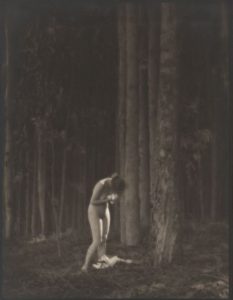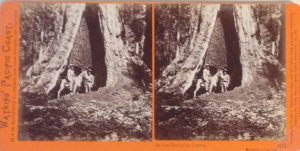
![]() In the early decades of the twentieth century, Arthur F. Kales worked in the pictorialist style popularized by Alfred Stieglitz and his magazine, Camera Work. Pictorialists believed that photography deserved equal status to painting and other forms of artistic printmaking, and they made photographs that emulated the look of other high art media, such as charcoal drawings, etchings, or paintings. Soft focus and other photographic techniques were used to achieve this goal.
In the early decades of the twentieth century, Arthur F. Kales worked in the pictorialist style popularized by Alfred Stieglitz and his magazine, Camera Work. Pictorialists believed that photography deserved equal status to painting and other forms of artistic printmaking, and they made photographs that emulated the look of other high art media, such as charcoal drawings, etchings, or paintings. Soft focus and other photographic techniques were used to achieve this goal.
Born in the Arizona Territory, Kales moved to California in 1903 to study law at Berkeley. While in the Bay Area, he became interested in photography, especially the budding California pictorialist movement. Kales published numerous essays about American pictorialist photography in the journal Photograms of the Year, and he was awarded a fellowship from the Royal Photographic Society.
Nude in a Forest is typical of Kales’ ethereal subjects and style. The nude is carefully lit to emphasize her smooth skin, in comparison to the rough bark and dark setting of the trees behind her. Timeless and universal, Kales’ female figure seems to inhabit an Eden before the fall, where humans co-exist in innocent harmony with the natural world.

Unlike earlier photographers of Western scenes, such as Carleton Watkins, who often included figures in their natural scenes to suggest an uneasy relationship between humans and the vastness of the wilderness, by the early twentieth century photographers like Kales looked to nature with dreamy nostalgia, perhaps seeking refuge from an increasingly industrial world of steam engines, skyscrapers, cars, and railroads.